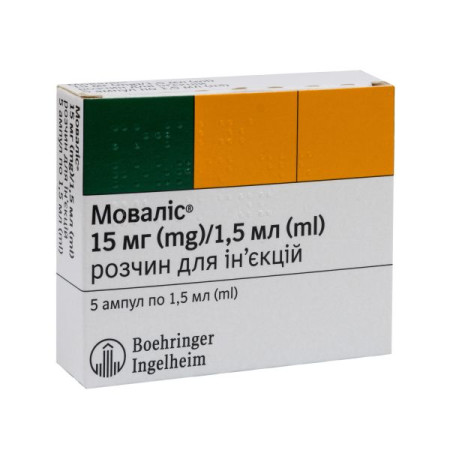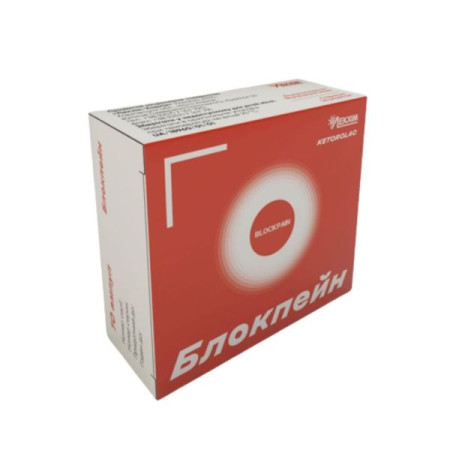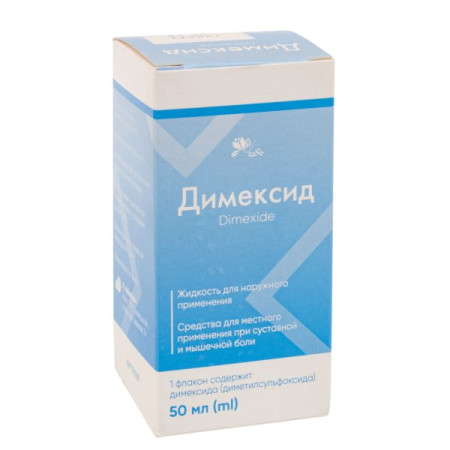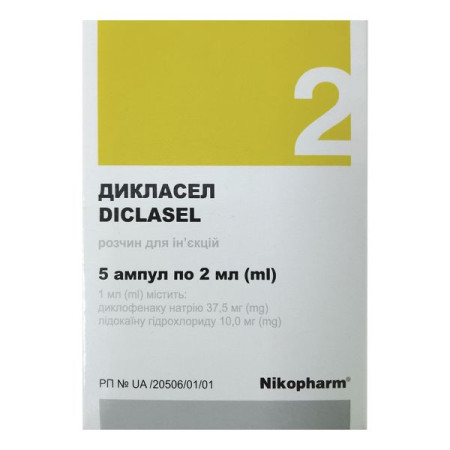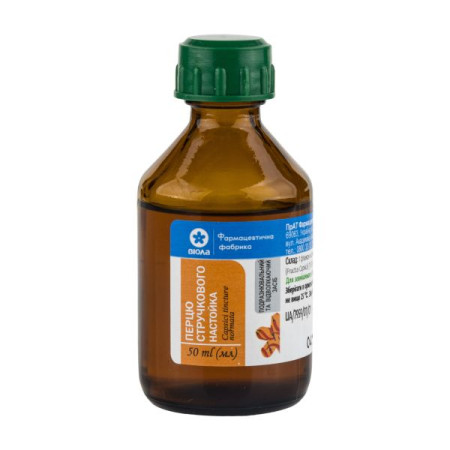Bupirol solution for infusion 4mg/ml 100ml No. 1
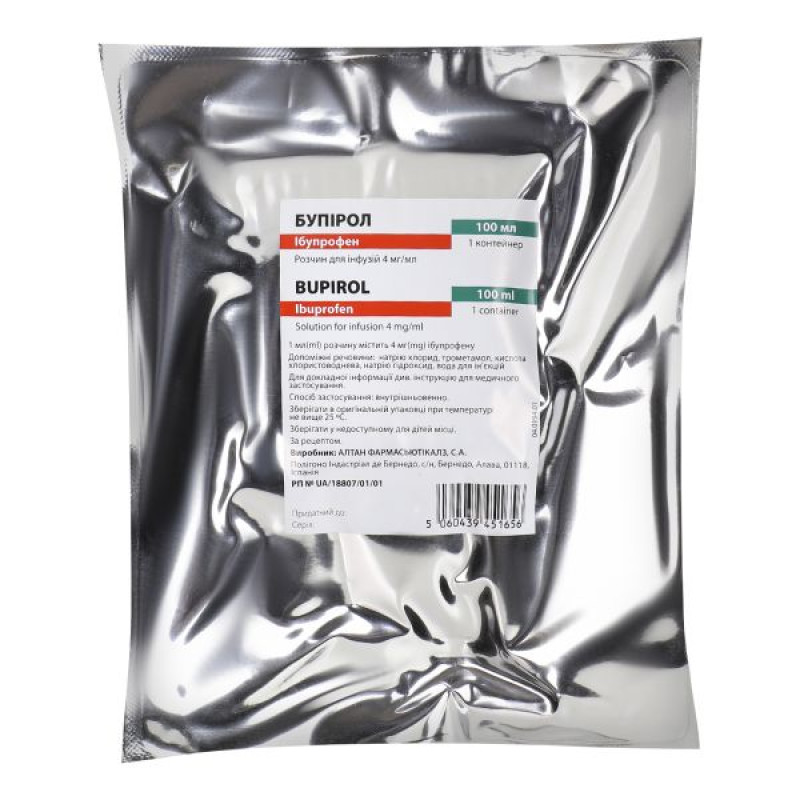
Instructions Bupirol solution for infusion 4mg/ml 100ml No. 1
Composition
active ingredient: ibuprofen;
1 ml of solution contains 4 mg of ibuprofen;
Excipients: sodium chloride, trometamol, hydrochloric acid, sodium hydroxide, water for injection.
Dosage form
Solution for infusion.
Main physicochemical properties: transparent colorless solution.
Pharmacotherapeutic group
Nonsteroidal anti-inflammatory and antirheumatic drugs. Propionic acid derivatives. ATC code M01A E01.
Pharmacological properties
Pharmacodynamics
Mechanism of action.
Ibuprofen is a nonsteroidal anti-inflammatory drug (NSAID) that has been shown to be effective in conventional animal models of inflammation, probably by inhibiting prostaglandin synthesis. Ibuprofen has antipyretic, inflammatory pain and oedematous effects. Experimental data suggest that ibuprofen may competitively inhibit the effect of low doses of acetylsalicylic acid on platelet aggregation when administered concomitantly. Some pharmacodynamic studies have shown that when a single dose of 400 mg ibuprofen was administered within 8 hours before or within 30 minutes after immediate-release acetylsalicylic acid (81 mg), the effect of acetylsalicylic acid on thromboxane formation or platelet aggregation was reduced.
Clinical studies have shown that intravenous infusion of ibuprofen in the dose range of 100 mg, 200 mg and 400 mg with a single administration reduces the glomerular filtration rate depending on the dose in the range of 15 to 30%.
Pharmacokinetics
Absorption.
Bupirol is administered intravenously, so the absorption process does not occur, and the bioavailability of ibuprofen is total.
Distribution.
The estimated volume of distribution is 0.11-2.21 l/kg. Ibuprofen is highly bound to plasma proteins, mainly albumin.
Biotransformation.
Ibuprofen is metabolized in the liver to two inactive metabolites, which, together with unchanged ibuprofen, are excreted by the kidneys.
Breeding.
Renal excretion is rapid and complete. The half-life is approximately 2 hours.
Linearity/non-linearity.
Ibuprofen demonstrates linearity in the area under the pharmacokinetic concentration-time curve (AUC) after single administration of ibuprofen (in the range of 200-800 mg).
Pharmacokinetic/pharmacodynamic relationship.
There is a relationship between the plasma levels of ibuprofen, its pharmacodynamic properties and its overall safety profile. The pharmacokinetics of ibuprofen are stereoselective after intravenous or oral administration. The mechanism of action and pharmacology of intravenous ibuprofen are not different from that of oral ibuprofen.
Indication
Symptomatic, short-term treatment of acute moderate pain and short-term symptomatic treatment of fever when intravenous administration is clinically justified, when other routes of administration are not possible.
Contraindication
Hypersensitivity to ibuprofen or to any of the components of the drug.
Hypersensitivity reactions (e.g. bronchial asthma, rhinitis, angioedema or urticaria) previously observed after taking ibuprofen, acetylsalicylic acid (aspirin) or other NSAIDs.
Gastric ulcer/bleeding in active form or history of recurrence (two or more severe episodes of ulcer or bleeding).
History of gastrointestinal bleeding or perforation associated with NSAID use.
Severe hepatic impairment, severe renal impairment, severe heart failure (NYHA class IV).
Cerebrovascular or other bleeding in the active phase.
Hemorrhagic diathesis or blood clotting disorder (thrombocytopenia).
Hematopoietic disorders of unknown etiology.
Severe dehydration (caused by vomiting, diarrhea, or insufficient fluid intake).
The last trimester of pregnancy.
Interaction with other medicinal products and other types of interactions
Other NSAIDs, including COX-2 inhibitors and salicylates. As a result of synergistic effects, the simultaneous use of two or more NSAIDs may increase the risk of gastrointestinal ulceration and bleeding. Therefore, the simultaneous use of ibuprofen and other NSAIDs should be avoided. The simultaneous use of the drug with other NSAIDs should also be avoided, as this may increase the risk of gastrointestinal ulceration and bleeding.
Digoxin: Concomitant use of ibuprofen with digoxin preparations may increase serum digoxin levels. Serum digoxin testing is usually not necessary when used correctly (maximum for 3 days).
Corticosteroids: Corticosteroids may also increase the risk of adverse reactions, especially those related to the gastrointestinal tract (GI) (ulcer or gastrointestinal bleeding).
Antiplatelet agents (e.g. clopidogrel and thioclopramide): Increased risk of gastrointestinal bleeding.
Anticoagulants. NSAIDs may enhance the effects of anticoagulants such as warfarin and heparin. In case of concomitant use, monitoring of coagulation levels is recommended. Phenytoin. Concomitant use of ibuprofen with phenytoin preparations may increase serum phenytoin levels. Monitoring of serum phenytoin levels is usually not necessary when used correctly (maximum for 3 days).
Selective serotonin reuptake inhibitors (SSRIs): May increase the risk of gastrointestinal bleeding.
Lithium: Concomitant use of ibuprofen with lithium preparations may increase serum lithium levels. Serum lithium monitoring is not usually necessary for proper use (maximum for 3 days).
Probenecid and sulfinpyrazone: Medicines containing probenecid or sulfinpyrazone may slow down the elimination of ibuprofen.
Diuretics, ACE inhibitors, beta-blockers and angiotensin II antagonists. Diuretics and ACE inhibitors may enhance the nephrotoxicity of NSAIDs. NSAIDs may reduce the effect of diuretics and other antihypertensive agents. In patients with renal insufficiency (e.g. dehydrated patients or elderly patients with compromised renal function), concomitant treatment with ACE inhibitors, beta-blockers or angiotensin II antagonists and cyclooxygenase inhibitors may be associated with changes in renal function, including acute renal failure, which are usually reversible. Therefore, concomitant use should be undertaken with caution, especially in elderly patients. Patients should be hydrated and renal monitoring should be considered after initiation of concomitant treatment and periodically monitored. Concomitant use of ACE inhibitors and ibuprofen may lead to hyperkalaemia.
Potassium-sparing diuretics: Concomitant use of ibuprofen and potassium-sparing diuretics may be associated with an increase in potassium levels, therefore monitoring of plasma potassium levels is recommended.
Methotrexate. NSAIDs inhibit the tubular secretion of methotrexate, so certain metabolic interactions may occur, leading to a decrease in methotrexate clearance. Administration of ibuprofen 24 hours before or after methotrexate administration may cause an increase in plasma levels of methotrexate with a subsequent increase in its toxic effects. Therefore, concomitant use of NSAIDs and high doses of methotrexate should be avoided. In addition, the potential risk of interaction should be considered when treating with low doses of methotrexate, especially in patients with impaired renal function. In combination therapy, renal function should be monitored.
Cyclosporine: The risk of renal impairment is increased by concomitant use with certain NSAIDs. This effect cannot be excluded when cyclosporine is combined with ibuprofen.
Zidovudine. Increased risk of hematologic toxicity when NSAIDs are taken with zidovudine. There is evidence of an increased risk of hemarthrosis and hematomas in HIV (+) hemophiliacs who take zidovudine and ibuprofen concomitantly. Blood tests are recommended 1-2 weeks after starting coadministration.
Sulfonylurea: Clinical studies have shown an interaction between NSAIDs and sulfonylureas. Although there is no information on the interaction between ibuprofen and sulfonylureas, it is recommended to monitor plasma glucose levels as a precaution when they are used concomitantly.
Quinolone antibiotics: Animal data suggest that NSAIDs may increase the risk of seizures associated with quinolone antibiotics. Patients taking NSAIDs and quinolones may be at increased risk of developing seizures.
Mifepristone: NSAIDs should not be administered within 8-12 days after mifepristone administration, as the effect of this drug may be reduced.
Baclofen: Ibuprofen may potentiate the toxicity of baclofen through possible accumulation due to ibuprofen-induced renal failure.
Pentoxifylline: Patients taking ibuprofen in combination with pentoxifylline may have an increased risk of bleeding, therefore monitoring of bleeding time is recommended. Tacrolimus: Concomitant use with ibuprofen may increase the risk of nephrotoxicity.
Aminoglycosides: NSAIDs may enhance the nephrotoxicity of aminoglycosides, even more so if aminoglycosides have been administered in high doses for a prolonged period of time.
Alcohol: Ibuprofen should be avoided in individuals with chronic alcohol use due to an increased risk of gastrointestinal side effects, including bleeding.
Herbal extracts. Ginkgo biloba may increase the risk of bleeding when used concomitantly with this medicine.
Application features
Adverse reactions after the use of ibuprofen and the entire group of NSAIDs in general can be reduced by using the minimum effective dose necessary to treat symptoms for the shortest period of time.
Elderly people are more likely to experience adverse reactions to NSAIDs, especially gastrointestinal bleeding and perforation, which can be fatal.
Respiratory: bronchospasm may occur in patients who suffer from bronchial asthma, allergic diseases or have a history of these diseases.
Anaphylactoid reactions: During intravenous infusion, close observation of the patient is recommended, especially at the beginning of the infusion, to detect any anaphylactic reaction caused by the active substance or excipients. Severe acute hypersensitivity reactions (e.g. anaphylactic shock) have been observed very rarely. At the first signs of a hypersensitivity reaction after taking ibuprofen, therapy should be discontinued and symptomatic treatment should be applied.
Other NSAIDs: Concomitant use of ibuprofen with other NSAIDs, including selective cyclooxygenase-2 inhibitors, increases the risk of adverse reactions and should be avoided.
Systemic lupus erythematosus and mixed connective tissue diseases: Ibuprofen should be used with caution in patients with systemic lupus erythematosus and mixed connective tissue diseases due to an increased risk of aseptic meningitis.
Renal and hepatic impairment. Ibuprofen should be used with caution in patients with a history of renal or hepatic disease, especially during concomitant treatment with diuretics, since prostaglandin inhibition may lead to fluid retention and renal impairment. When administered to these patients, the dose of ibuprofen should be kept as low as possible and renal function should be monitored regularly. In case of dehydration, adequate fluid intake should be ensured, since dehydration may be a trigger for the development of renal failure. In general, regular use of analgesics, especially a combination of different analgesics, can lead to long-term kidney damage with a risk of developing renal failure (analgesic nephropathy). Patients at greatest risk of developing this reaction are the elderly and patients with impaired renal function, hepatic dysfunction, those treated with diuretics or ACE inhibitors. Patients with renal insufficiency and dehydration have reported the development of hyperkalemia after taking high doses of trometamol. As with other NSAIDs, ibuprofen can cause a slight transient increase in some liver function tests, as well as a significant increase in transaminases. In the event of a significant increase in these parameters, treatment should be discontinued.
Cardiovascular and cerebrovascular effects.
Cases of Kounis syndrome have been reported in patients treated with ibuprofen. Kounis syndrome is defined as cardiovascular symptoms caused by an allergic or hypersensitivity reaction associated with narrowing of the coronary arteries, potentially leading to myocardial infarction.
Patients with hypertension and/or a history of mild to moderate congestive heart failure should be initiated with caution (consultation with a doctor is necessary) when initiating long-term treatment, as fluid retention, hypertension and oedema have been reported with ibuprofen, as with other NSAIDs. Evidence suggests that ibuprofen use, particularly at high doses (2400 mg/day) or for long periods, is associated with a slightly increased risk of arterial thrombotic events (e.g. myocardial infarction or stroke). In general, low doses of ibuprofen (e.g. ≤ 1200 mg/day) are not expected to increase the risk of myocardial infarction. In patients with uncontrolled hypertension, congestive heart failure, established ischemic heart disease, peripheral arterial disease and/or cerebrovascular disease, long-term treatment should only be prescribed by a physician after careful consideration. In patients with significant risk factors for cardiovascular complications (such as hypertension, hyperlipidemia, diabetes mellitus, smoking), long-term treatment with NSAIDs should only be prescribed after careful consideration.
Impairment of female fertility. There is limited evidence that medicinal products that inhibit cyclooxygenase/prostaglandin synthesis may affect ovulation. This is reversible after discontinuation of treatment. Long-term use (at doses of 2400 mg/day and for treatment durations exceeding 10 days) of ibuprofen may impair female fertility and is therefore not recommended in women attempting to conceive. This medicinal product should be discontinued in women who have difficulty conceiving or are undergoing investigation for infertility.
The risk of gastrointestinal bleeding, perforation, ulceration increases with increasing NSAID dose in patients with a history of ulcer, especially if complicated by bleeding or perforation, and in elderly patients. These patients should start treatment with minimal doses. Caution should be exercised when treating patients receiving concomitant medications that may increase the risk of gastrotoxicity or bleeding, such as oral corticosteroids, anticoagulants (e.g. warfarin) or antiplatelet agents (e.g. acetylsalicylic acid). In long-term treatment for these patients, as well as for patients who require concomitant use of low doses of acetylsalicylic acid (aspirin) or other drugs that may increase the risk for the gastrointestinal tract, the physician should consider the appropriateness of prescribing combination therapy with misoprostol or proton pump inhibitors. Patients with a history of gastrointestinal disorders, especially elderly patients, should be informed of any unusual gastrointestinal symptoms (predominantly bleeding), especially gastrointestinal bleeding at the beginning of treatment. If gastrointestinal bleeding or ulceration occurs in patients receiving ibuprofen, treatment should be discontinued immediately.
Severe cutaneous adverse reactions (SCARs)
Severe cutaneous adverse reactions (SCARs), including exfoliative dermatitis, erythema multiforme, Stevens-Johnson syndrome (SJS), toxic epidermal necrolysis (TEN), drug-induced eosinophilia with systemic symptoms (DRESS) and acute generalised exanthematous pustulosis (AGEP), which can be life-threatening or fatal, have been reported with ibuprofen (see section 4.8). Most of these reactions occurred within the first month of treatment.
If signs and symptoms suggestive of these reactions occur, ibuprofen should be discontinued immediately and alternative treatment considered (if necessary). In exceptional cases, varicella may cause severe skin infections and soft tissue complications. The role of NSAIDs in the exacerbation of these infections cannot be ruled out. Ibuprofen should be avoided in cases of varicella. Haematological effects. Ibuprofen may temporarily inhibit platelet function (platelet aggregation), increasing bleeding time and the risk of bleeding. Therefore, patients with bleeding disorders should be monitored. Ibuprofen should be used with particular caution in patients receiving acetylsalicylic acid to inhibit platelet aggregation.
Ophthalmic effects: To date, reports of blurred or decreased vision, scotomas, and changes in color vision have been received with oral ibuprofen.
Other special warnings and precautions for use: NSAIDs may mask signs of infection.
Long-term use of painkillers can cause headaches that cannot be treated with increased doses of the medication.
Masking of symptoms of underlying infections. Ibuprofen may mask the symptoms of infection, which may lead to delayed initiation of appropriate treatment and thus worsen the outcome of the infectious disease. This has been observed in bacterial pneumonia and bacterial complications of varicella. When ibuprofen is administered to reduce fever and relieve pain in infections, monitoring of the patient is recommended. In outpatient settings, the patient should seek medical attention immediately if symptoms persist or worsen.
In patients taking ibuprofen for a long time, renal and hepatic function, as well as hematological blood parameters, should be monitored.
Transient hypoglycemia has been reported with trometamol. It is recommended to monitor plasma glucose levels in patients during treatment. Prolonged use of analgesics may cause headaches that cannot be treated with increased doses of this drug.
The patient should be closely monitored at the beginning of the infusion for the early detection of anaphylactoid and hypersensitivity reactions. At the first sign of such symptoms, the infusion should be stopped and appropriate symptomatic treatment should be given. In exceptional cases, varicella can cause serious skin and soft tissue infections. At present, the role of NSAIDs in the exacerbation of these infections cannot be excluded. Therefore, it is advisable to avoid the use of ibuprofen in varicella.
Impact on laboratory tests:
Bleeding time (may be prolonged for 1 day after discontinuation of treatment).
Blood glucose concentration (may decrease).
Creatinine clearance (may decrease).
Hematocrit or hemoglobin (may decrease).
Urea nitrogen concentration and creatinine and potassium concentration in the blood (may increase).
Liver function: increased transaminase values.
Ibuprofen should only be used after careful benefit/risk assessment in patients with inborn errors of porphyrin metabolism (e.g. acute intermittent porphyria).
Patients who are allergic to other substances, as they are also at increased risk of experiencing hypersensitivity reactions when using this medicinal product.
Patients with hay fever, nasal polyps or chronic obstructive pulmonary disease, as they are at increased risk of developing an allergic reaction. These may manifest as asthma attacks (so-called analgesic asthma), angioedema or urticaria.
Important information about excipients.
This medicinal product contains 13 mmol (303 mg) sodium per 100 ml solution. Caution should be exercised when administering this medicinal product to patients on a controlled sodium diet.
Use during pregnancy or breastfeeding
Pregnancy.
Inhibition of prostaglandin synthesis may adversely affect pregnancy and/or embryonal/fetal development. Data indicate an increased risk of miscarriage and birth defects after use of prostaglandin synthesis inhibitors in early pregnancy. The risk is believed to increase with increasing dose and duration of therapy. From the 20th week of pregnancy, ibuprofen may cause oligohydramnios due to fetal renal dysfunction. This may occur shortly after initiation of treatment and is usually reversible after discontinuation of treatment. In addition, there have been reports of narrowing of the ductus arteriosus following treatment in the second trimester of pregnancy, most of which resolved after discontinuation of treatment. Therefore, NSAIDs should not be taken during the first two trimesters of pregnancy or during labour unless the expected benefit to the patient outweighs the potential risk to the fetus.
If ibuprofen is used by a woman attempting to conceive, or during the first and second trimesters of pregnancy, the dose should be kept as low and the duration of treatment as short as possible. Antenatal monitoring for oligohydramnios and narrowing of the ductus arteriosus should be considered after exposure to ibuprofen for several days, starting from the 20th week of gestation. The drug should be discontinued if oligohydramnios or narrowing of the ductus arteriosus is detected.
During the third trimester of pregnancy, the use of any prostaglandin synthesis inhibitor may cause effects on the fetus such as cardiopulmonary toxicity (premature narrowing/closure of the fetal ductus arteriosus with pulmonary hypertension) and renal impairment (see above), which may progress to renal failure with oligohydramnios. Ibuprofen is contraindicated in the third trimester of pregnancy (see section "Contraindications") due to the possibility of suppression of uterine contractility, which may lead to increased duration of labor with a tendency to increased bleeding in the mother and child, even at low doses.
Breastfeeding period.
Small amounts of ibuprofen have been detected in breast milk. To date, no harmful effects on infants are known, so for short-term treatment with lower doses, interruption of breastfeeding is usually not necessary. However, it is recommended to interrupt breastfeeding when using doses exceeding 1200 mg per day or for longer periods of treatment because of the potential for inhibiting prostaglandin synthesis in the newborn.
Fertility.
Medicinal products that inhibit cyclooxygenase/prostaglandin synthesis may impair female fertility by affecting ovulation. This is reversible upon discontinuation of treatment.
Ability to influence reaction speed when driving vehicles or other mechanisms
When used in recommended doses, the drug does not affect the reaction rate when driving or operating other mechanisms. Patients who experience dizziness, drowsiness, disorientation or visual disturbances while taking NSAIDs should refrain from driving or operating mechanisms.
Method of administration and doses
In order to minimize undesirable effects, Bupirol should be administered in the lowest effective doses for the shortest possible period of time.
The patient should be adequately hydrated to minimize the risk of possible renal adverse reactions.
Adults. The recommended dose is 400 mg ibuprofen every 6-8 hours as needed, not to exceed the maximum recommended daily dose of 1200 mg. The drug is intended for short-term treatment (maximum duration of treatment is 3 days). Patients are advised to switch to oral treatment as soon as possible.
Renal impairment: In patients with mild to moderate renal impairment, the initial dose should be reduced and maintained as low as possible for the shortest possible duration. Bupirol is contraindicated in patients with severe renal impairment.
Hepatic impairment. In patients with mild to moderate hepatic impairment, treatment should be initiated at a reduced dose and the dose should be kept as low as possible for the shortest necessary duration of treatment. Bupirol is contraindicated in patients with severe hepatic impairment.
Method of administration.
For intravenous use. The drug should be administered as an intravenous infusion over 30 minutes.
Children
The use of Bupirol in children and adolescents has not been studied, therefore it should not be used in this category of patients. Safety and efficacy have not been established.
Overdose
The half-life in case of overdose is 1.5–3 hours.
Symptoms. In most patients, the use of a significant amount of NSAIDs caused only nausea, vomiting, epigastric pain, very rarely diarrhea. Tinnitus, headache, dizziness and gastrointestinal bleeding may also occur. In more severe poisoning, toxic lesions of the central nervous system may occur, which manifest themselves in the form of drowsiness, nystagmus, visual impairment, sometimes - an excited state and disorientation or coma. Sometimes patients have convulsions. In severe poisoning, hyperkalemia and metabolic acidosis, acute renal failure, liver damage, arterial hypotension, respiratory failure and cyanosis may occur. In patients with bronchial asthma, exacerbation of the course of asthma may occur.
Treatment. There is no specific antidote, symptomatic treatment should be initiated. Therapeutic options for treating intoxication are dictated by the degree, level and clinical symptoms in accordance with general intensive care practice.
Side effects
All adverse reactions are listed by system organ class and frequency: very common (≥ 1/10), common (≥ 1/100 - < 1/10), uncommon (≥ 1/1000 - < 1/100), rare (≥ 1/10,000 - < 1/1000), very rare (< 1/10,000), frequency unknown (cannot be estimated from the available data). The most common adverse reactions are from the gastrointestinal tract, which are mostly dose-dependent. Peptic ulcers, gastrointestinal perforation or bleeding, sometimes fatal, may occur, especially in elderly patients. Nausea, vomiting, diarrhea, flatulence, constipation, dyspepsia, abdominal pain, melena, haematemesis, ulcerative stomatitis, exacerbation of colitis and Crohn's disease have been reported. Gastritis has been observed less frequently. Severe hypersensitivity reactions (including infusion site reactions, anaphylactic shock) and serious cutaneous adverse reactions such as bullous reactions including Stevens-Johnson syndrome and toxic epidermal necrolysis (Lyell's syndrome), erythema multiforme and alopecia have been reported very rarely.
Exacerbation of infectious inflammations (e.g., development of necrotizing fasciitis) coinciding with the use of NSAIDs has been described. This may be related to the mechanism of action of NSAIDs.
Photosensitivity, allergic vasculitis, and in exceptional cases severe skin infections and soft tissue complications may occur during varicella infection. Edema, hypertension, and heart failure have been reported in association with NSAID treatment.
Clinical studies suggest that the use of ibuprofen, especially at high doses (2400 mg/day), may be associated with a small increased risk of arterial thrombotic events (e.g. myocardial infarction or stroke).
MedDRA, Organs and systems | Frequency | Adverse reactions |
| Laboratory values, infections | Very rare | Exacerbation of infectious inflammations (e.g., development of necrotizing fasciitis) coinciding with the use of NSAIDs has been described. This may be related to the mechanism of action of NSAIDs. |
| Blood and lymphatic system disorders | Very rare | Blood disorders (anemia, agranulocytosis, leukopenia, thrombocytopenia and pancytopenia). The first symptoms are fever, sore throat, superficial mouth sores, flu-like symptoms, nosebleeds and skin bleeding. |
| On the part of the immune system | Infrequently | Hypersensitivity reactions: Skin rash, itching, asthma attacks. |
| Very rare | Systemic lupus erythematosus (SLE), severe hypersensitivity reactions, facial swelling, tongue swelling, laryngeal swelling with airway narrowing, difficulty breathing, palpitations, hypotension and shock. | |
| From the psyche | Infrequently | Anxiety, restlessness |
| Rarely | Psychotic reactions, nervousness, irritability, confusion or disorientation, depression. | |
| From the nervous system | Very often | Fatigue, headache, dizziness. |
| Infrequently | Insomnia, agitation, irritability. | |
| Very rare | Aseptic meningitis (neck stiffness, headache, nausea, vomiting, fever, or confusion). | |
| From the organs of vision | Infrequently | Visual impairment. |
| Rarely | Reversible toxic amblyopia. | |
| From the side of the organs of hearing and vestibular apparatus | Often | Vertigo. | Infrequently | Tinnitus. |
| Rarely | Hearing impairment. | |
| Cardiovascular system | Very rare | Palpitations, heart failure, myocardial infarction. Arterial hypertension. |
| Frequency unknown | Kounis syndrome | |
| Respiratory, thoracic and mediastinal disorders | Very rare | Asthma, bronchospasm, shortness of breath, wheezing. |
| Gastrointestinal tract | Very often | Heartburn, abdominal pain, nausea, vomiting, flatulence, diarrhea, constipation and minor gastrointestinal bleeding, which may cause anemia in exceptional cases. |
| Often | Gastrointestinal ulcers, potentially with bleeding and perforation. Ulcerative stomatitis, exacerbation of colitis and Crohn's disease. | |
| Infrequently | Gastritis. | |
| Rarely | Esophageal stenosis, exacerbation of diverticulosis, unspecified hemorrhagic colitis. If gastrointestinal bleeding occurs, it may cause anemia and hematemesis. | |
| Very rare | Esophagitis, pancreatitis, formation of intestinal, diaphragmatic strictures. | |
| Liver and biliary tract | Rarely | Jaundice, liver dysfunction, liver damage, especially with long-term therapy of acute hepatitis. |
| Frequency unknown | Liver failure. | |
| Skin and subcutaneous tissue disorders | Often | Skin rashes. |
| Infrequently | Urticaria, pruritus, purpura (including allergic purpura). | |
| Very rare | Bullous or vesicular reactions, including Stevens-Johnson syndrome and toxic epidermal necrolysis (Lyell's syndrome), erythema multiforme, exfoliative dermatitis. Photosensitivity reactions and allergic vasculitis. In exceptional cases, severe skin reactions in chickenpox. | |
| Frequency unknown | Drug-induced eosinophilia with systemic symptoms (DRESS syndrome), acute generalized exanthematous pustulosis (AGEP) | |
| Musculoskeletal and connective tissue disorders | Rarely | Stiffness of the neck muscles. |
| Renal and urinary disorders | Infrequently | Decreased urine excretion, edema, especially in patients with arterial hypertension or renal failure, nephrotic syndrome, interstitial nephritis, which may be accompanied by acute renal failure. |
| Rarely | Papillary necrosis, especially with prolonged therapy, increased serum uric acid concentration. | |
| General disorders and administration site conditions | Often | Pain and burning sensation at the injection site. |
| Frequency unknown | Swelling, hematoma, or bleeding at the injection site. |
Reporting of suspected adverse reactions.
Reporting suspected adverse reactions after the marketing authorisation of a medicinal product is an important procedure. This allows for continued monitoring of the benefit/risk balance of the medicinal product concerned. Healthcare professionals should report any suspected adverse reactions via the national reporting system.
Expiration date
3 years.
Storage conditions
Store in original packaging at t
There are no reviews for this product.
There are no reviews for this product, be the first to leave your review.
No questions about this product, be the first and ask your question.





